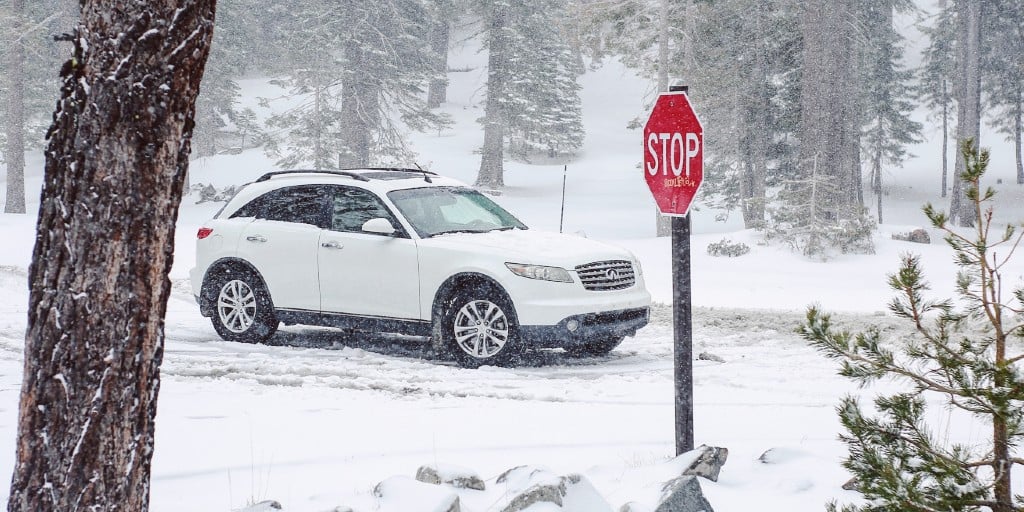As winter begins, driving safely becomes everyone’s topmost priority. Well, that and enjoying the snow of course. And one of the ways through which people master winter driving is to get winter tires.
However, not everyone does so.
While some drivers are diligent enough to change to winter tires even before the first snowfall, others might choose to use all-season tires throughout the year.
One of the reasons for that is that new vehicles are generally sold with all-season tires.
While all-season tires do provide optimal traction in wet or dry conditions in mild weather, when the temperature dips below 7 degrees Celsius, the tires’ rubber compound starts to lose its pliability.
As a result, your tires may start to lose their grip on the road – something that could lead to a mishap.
Winter tires are important tools to improve performance and safety for cold-weather driving. And since winter is one of Saskatchewan’s longest seasons, that means they’re the safest choice for half the year.
Recommended Reading: 7 Tips to Expertly Navigate Roads in Saskatchewan
If you’re still on the fence, here are three reasons why winter tires are an absolute necessity.
1. They’re created for the cold
Whether you’re travelling in town or are on the highway, winter tires keep you protected in unpredictable weather conditions.
All-season tire tread pattern offers limited bite on snow or ice-covered pavement. Braking distances rise sharply, and it becomes harder to steer your vehicle accurately through a corner.
Winter tires, on the other hand, are designed for cold conditions.
They’re made from a rubber compound that remains flexible at sub-zero temperatures, while a more aggressive tread pattern has dozens of sipes — small, wavy gaps — to boost traction.

Some winter tires also incorporate metal studs to further increase grip, especially on ice.
These features make a difference. Research shows that in icy conditions, winter tires cut braking distances by up to two car lengths (or nine metres) compared to all-season tires.
2. They’re designed for traction
Winter tires have a unique construction. As mentioned above, they are designed with tiny grooves on the tread pattern known as ‘sipes’ to move water away from the front of the tire.
This helps them remain in constant contact with the road for added safety.
Sipes on the tire tread improve traction on snow and ice, while also preventing your vehicle from hydroplaning on wet road conditions.
If you are considering purchasing winter tires for the icy season, look for a Three-Peaked Mountain Snowflake (“Alpine”) symbol on the sidewall of the tire.

This image means that the tires meet Transport Canada’s requirements for snow traction performance and are designed for use in severe conditions.
Looking for winter tires? Find some quality tires while earning valuable CAA Dollars® at Pirelli
3. They provide superior performance
In addition to traction, the superior performance of a vehicle also matters.
Winter tires not only help you maintain control of your vehicle on frozen roads but also improve handling and braking so that your vehicle requires shorter distances to stop.
They give you a few extra seconds while stopping or braking on ice, which alone can be the difference between a collision or stopping just in time.
A survey by the Tire and Rubber Association of Canada (TRAC) states that 80% of winter tire owners believe driving a vehicle equipped with winter tires has saved them from loss of control or a collision.
Therefore, having winter tires can give you peace of mind and a sense of security while driving in tough, winter conditions. Help your vehicle perform better and keep yourself and your passengers safe.
If, however, you do find yourself in an unfortunate situation where your vehicle skids off the road, it’s crucial to not panic. Once you’ve composed yourself, use the CAA Mobile App and request roadside assistance. You can also call CAA Saskatchewan at 1-800-222-4357.
Stay safe this winter
Winter tires may not currently be mandatory in Saskatchewan, but they are highly recommended to assist you while driving in town and on the highways.
Peter Kreis, VP of Operations at CAA Saskatchewan, shares that opinion.
He says, “though winter tires aren’t mandatory in Saskatchewan, CAA has long encouraged their use in order to improve safety for all road users.”
It’s a small investment that can help you to avoid costly damages to your vehicle from collisions. Plus, they will improve your control in icy and snowy conditions.
If you have any questions, you can seek advice from your trusted AARS technician or the experts at the CAA Battery Depot. Road Safety is our priority!
Stay safe this winter and be prepared for Saskatchewan’s unpredictable weather.


